I’ve been watching the development and miniaturization of quadcopters with interest over the last several years. Just a few years ago, I was impressed with the little radio controlled consumer helicopters that would let you say up and down but would always go forward slowly. Now we have quadcopters with gyroscopes and full-blown computer control for under $100. I decided it was time to start learning more about quadcopters, and I was excited when Verizon offered to let me, and my son Nolan, spend a few weeks playing with the Parrot Rolling Spider.
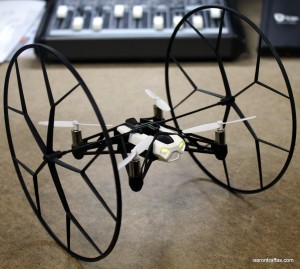
The Rolling Spider from Parrot is billed as an “ultra-compact drone” that’s controlled by a compatible smartphone. It uses Bluetooth LE, so any late-model iPhone, iPad, Android phone or Android tablet should work fine. I used my Nexus 7 tablet, but it would have worked just as easily with my Nexus 5, Nexus 6, or my wife’s LG G3.
The Rolling Spider is the perfect mini quadcopter for inside the house for two reason. First, with the optional wheels attached, it’s nearly impossible to damage the drone or anything in the house. Second, the computer control makes it very easy to perform only the maneuvers you initiate. Since receiving the Rolling Spider, I’ve purchased another mini quadcopter, and it’s not nearly as easy to control as the Rolling Spider – nor as safe in the house.

The mobile app has different control settings, allowing control of the drone either by tilting the phone or tablet and using its accelerometer to steer or by using a more traditional joystick-based control scheme. I tried the tilt-to-steer method a little bit, which is the default control scheme for the Rolling Spider, but it wasn’t as intuitive to me as the joystick method, so I found myself using the standard joystick control scheme most of the time.
Controlling the Rolling Spider in joystick mode is dead simple. Tapping the take off icon on the mobile app launches the drone about three feet into the air where it simply hovers. At the end of each instruction – forwards, backwards, left, right, up, down and turn – the craft returns to hovering in place. This is different behavior from other, less expensive, consumer drones on the market, as they lack the ability to automatically hover and can be very difficult to keep stationary in the air.
There’s no way around it – the Rolling Spider is a ton of fun. My three-year-old son Nolan loves to run under it and get chased by it. The front of the drone looks like a face with lights for eyes, and it even comes with a pack of stickers to customize the look.
It does have a camera on board, but it always faces straight down and, honestly, isn’t very good. Here’s an example picture from the camera.
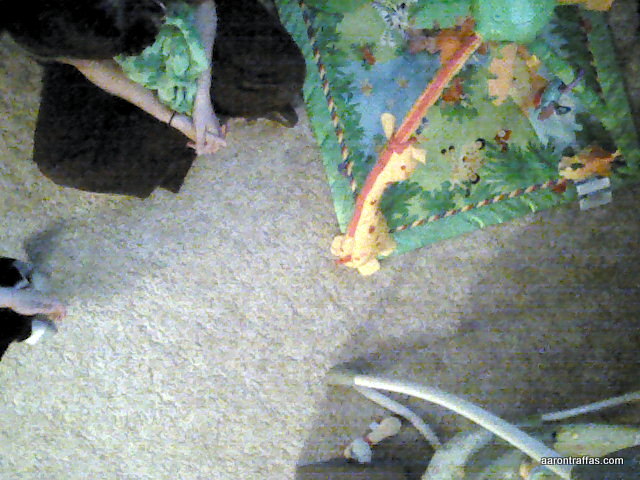
The mobile app makes it easy to shoot video from the phone or tablet while controlling the spider, which is a great idea, but it’s a little tough to both control the device and hold the controller in a way that will get a good video shot of the drone.
Pictures and video might not be the best use for the Rolling Spider, but that doesn’t mean it isn’t versatile. With the wheels on, it’s safe to fly indoors. It can be made to roll up and down walls and across the ceiling, though the best use for the wheels is to protect the drone when it bumps into things. For safety reasons, as soon as the wheels hit something, the motors immediately stop. With the wheels off, it becomes much more maneuverable and is better suited to outdoor flying. The mobile app has preprogrammed tricks that can be executed when the optional wheels are disconnected, such as rolls and flips, which are especially fun to watch.
The Rolling Spider boasts a flight time of six minutes with the wheels and eight minutes without them, though it felt like more to me when I took it outside and flew without the wheels. Recharging the batteries takes about an hour.
If you’re looking for a great starter drone or just a really fun toy for indoor or back yard play, the Parrot Rolling Spider is an excellent choice.














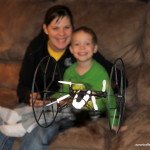
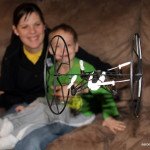

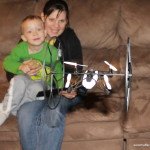
Comments are closed.